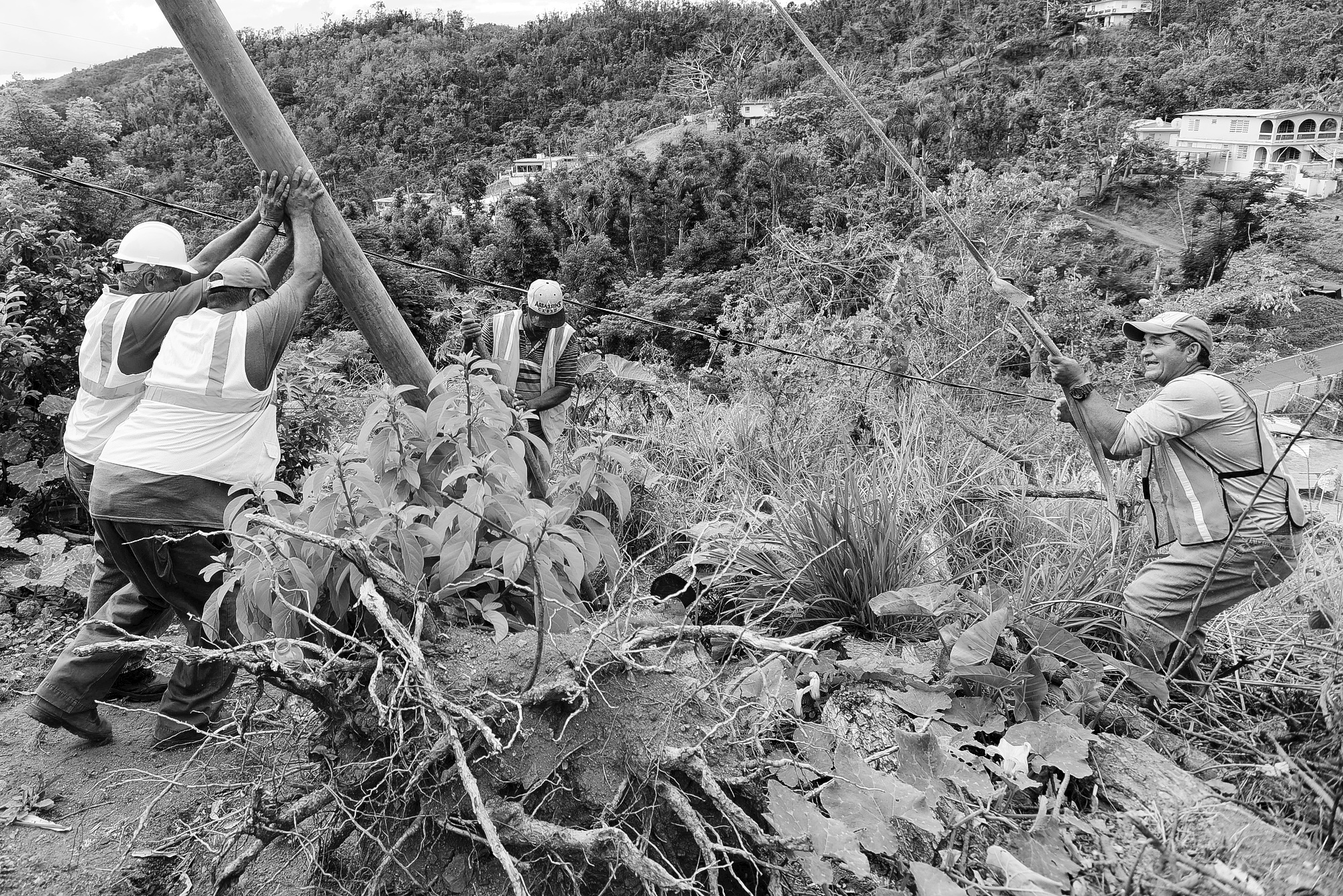
By DANICA COTO
Associated Press
SAN JUAN, Puerto Rico (AP) — The administrator of the U.S. Federal Emergency Management Agency said Friday it will take up to an estimated $50 billion to help rebuild Puerto Rico from Hurricane Maria and warned that the U.S. territory is not ready for another disaster. Brock Long said his agency aims to make the island’s roads, homes, bridges and electrical grid as strong as possible but noted that the next hurricane season starts June 1. “We’re running out of time,” he said during a visit to Puerto Rico, adding that much of the island’s infrastructure collapsed. “We have a long way to go.”
Long said his agency also is coordinating a June 14 planning and training exercise with Puerto Rico’s government in which life-saving supplies will be delivered to the island’s 78 municipalities to ensure better response times for any upcoming storms. Cities and towns will be allowed to store those supplies for future disasters. Long stressed that Puerto Rico’s public and private sectors have to build a strong emergency response network and establish unified plans. “FEMA cannot be directly responsible for all of the response and recovery,” he said.
He also said the private sector should ensure that communication systems become more resistant. Maria left nearly all of Puerto Rico without phone service after the Category 4 storm hit on Sept. 20. Long defended his agency from ongoing criticism that it did not respond quickly enough to the hurricane or dedicate the same amount of resources compared with other natural disasters in the U.S. mainland.
“(That’s) completely false,” he said, adding that in the first six months since Maria hit, FEMA invested $10 billion in Puerto Rico, in contrast to the $6 billion invested in the six months after Hurricane Katrina. He said his agency is working to reduce bureaucracy but needs to ensure that federal funds will be spent appropriately. “Recovery never moves as fast as people want it to be,” he said. “And in this case, moving faster can be detrimental from the standpoint of putting this money to work in a manner that truly makes Puerto Rico stronger and more resilient.”
Mike Byrne, FEMA’s federal coordinating officer in Puerto Rico, said he is working with the U.S. territory’s government to determine how federal funds will be used to identify priorities and rebuild damaged infrastructure. Byrne said some of the money will go toward strengthening the island’s power grid since the storm destroyed two-thirds of its distribution system. More than 50,000 power customers remain in the dark, but he said 96 percent of all customers now have electricity.
“We’ve done the Band-Aid,” he said. “We’ve patched the system back together.” Long said the recovery process has been slow in part because supplies ranging from construction equipment to power poles have been scarce in light of the natural disasters that hit the U.S. mainland, Puerto Rico and the U.S. Virgin Islands last year. Officials said FEMA will have a presence in Puerto Rico for several years to help it rebuild.



















